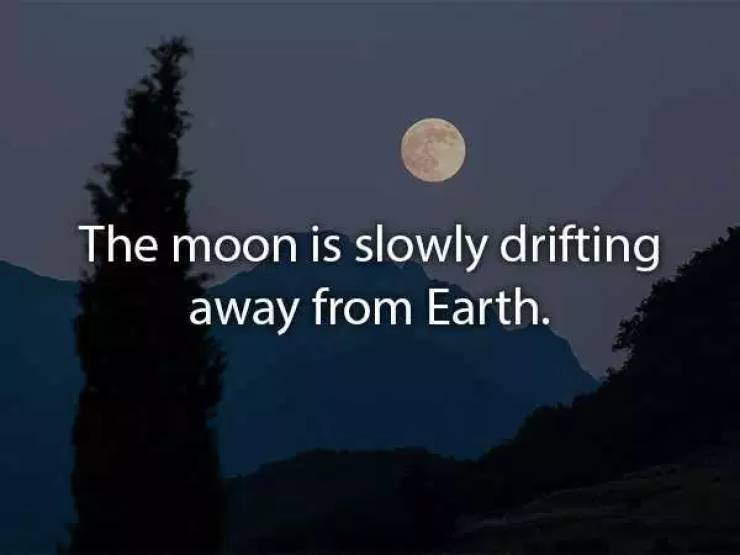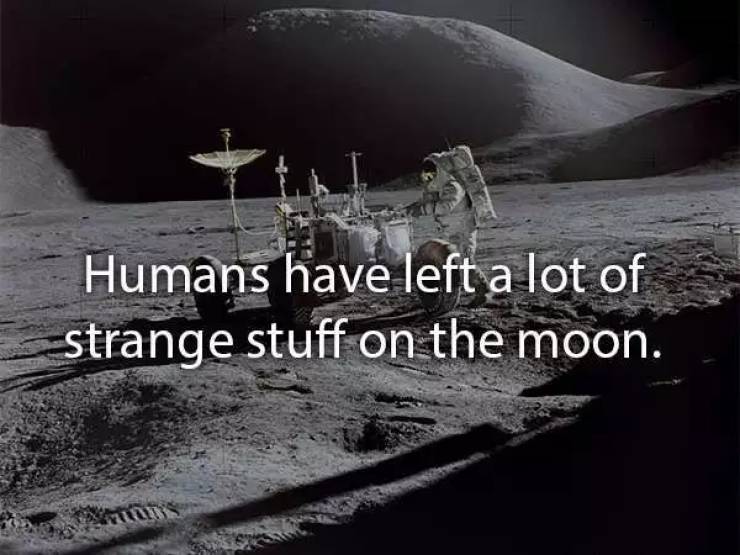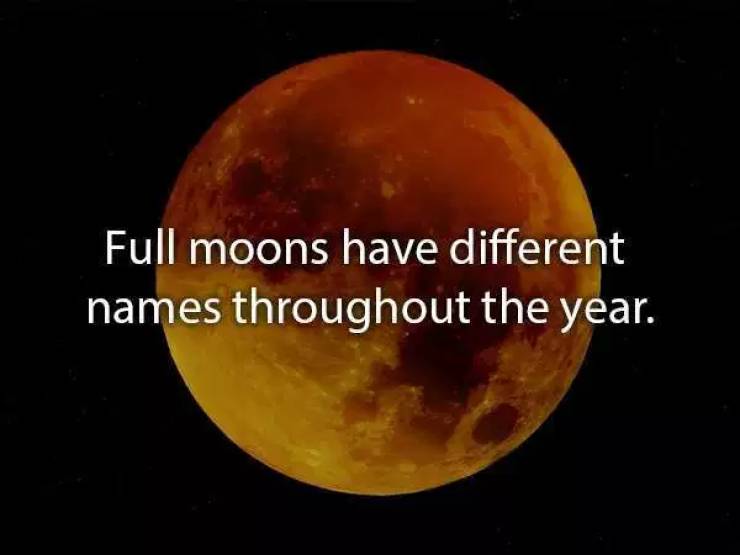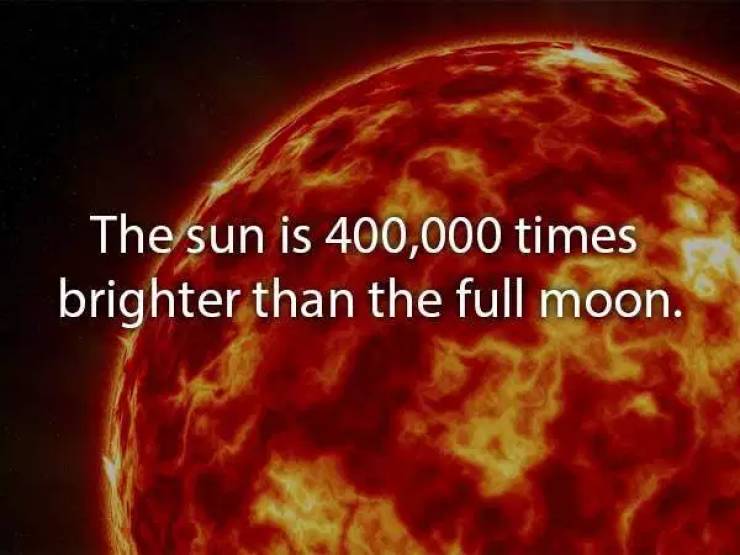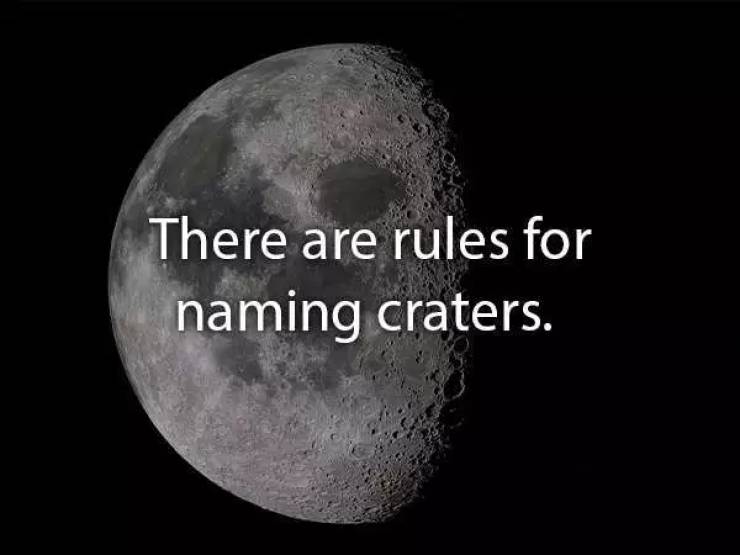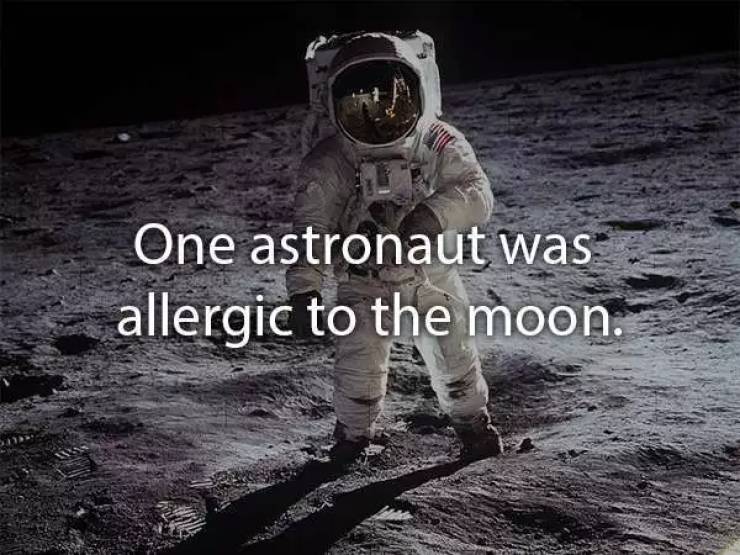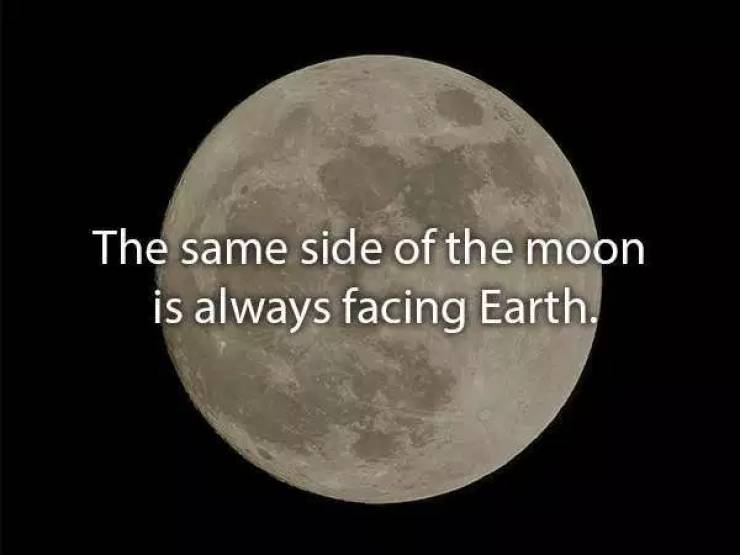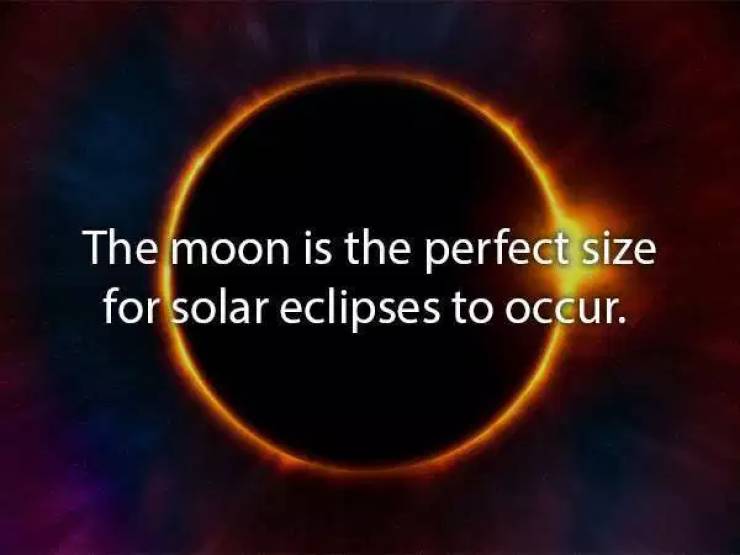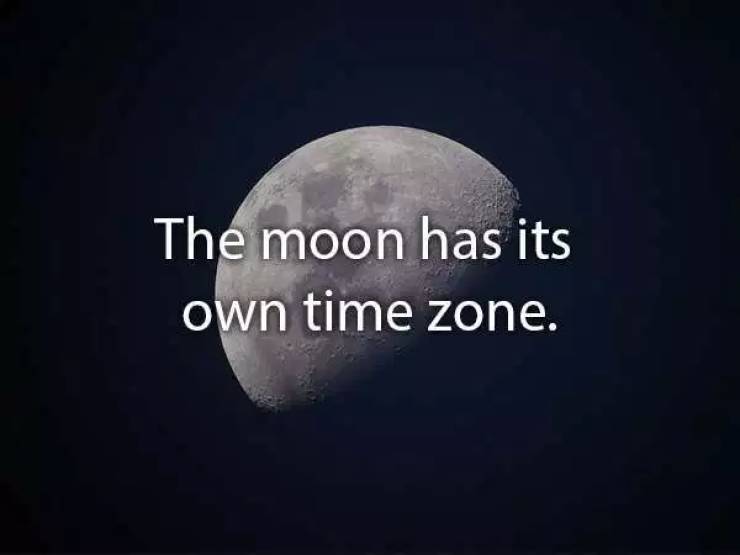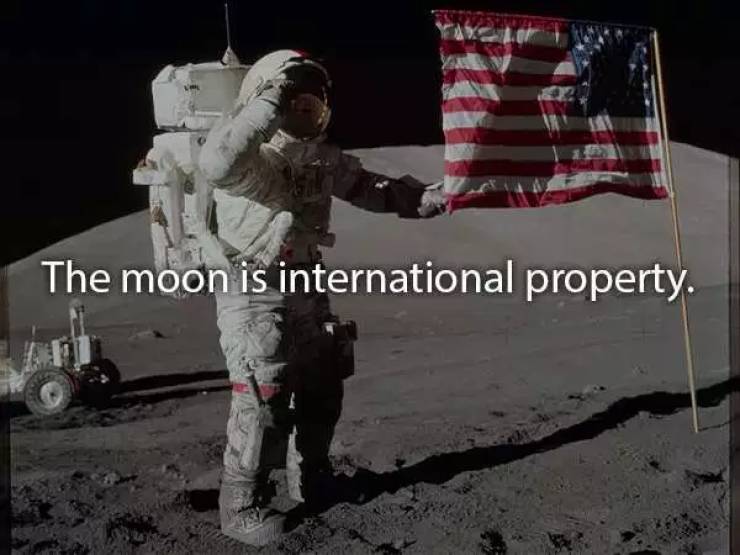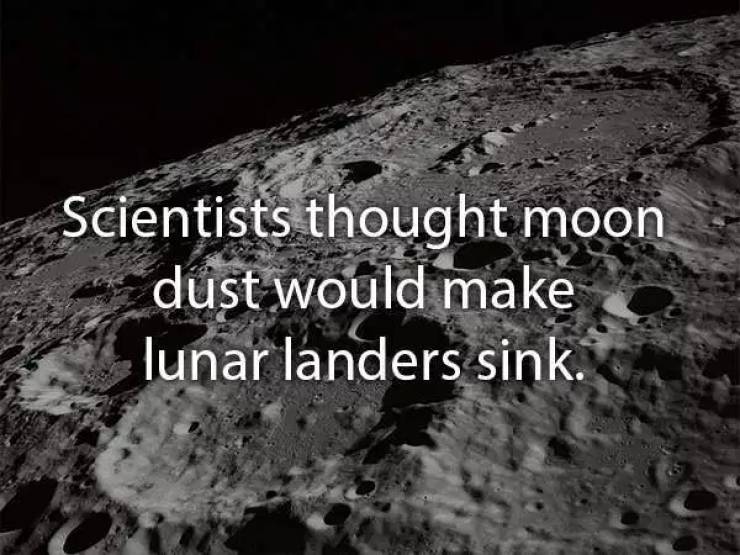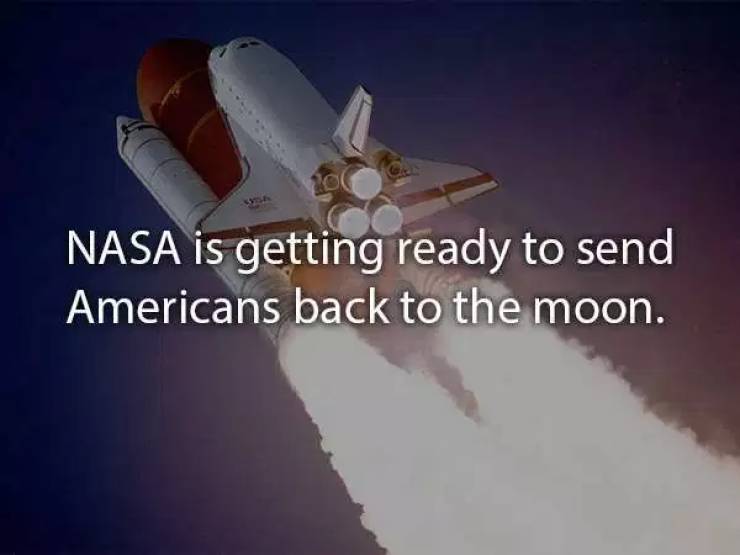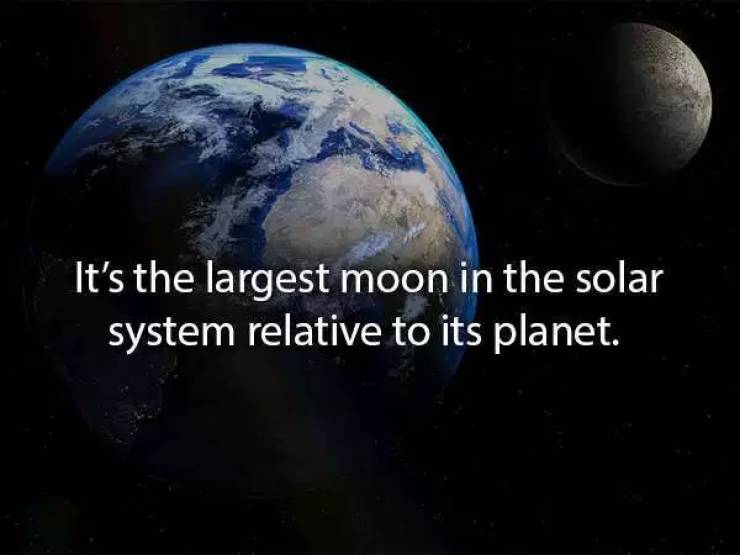Every year, the moon moves roughly 4 centimeters further away from our planet. Scientists estimate that this will continue to happen for the next 50 billion years. At that point, it would take the moon 47 days to orbit Earth.
Earth artifacts have been left on the moon from several different missions totaling over 400,000 pounds of stuff including golf balls and makeshift javelins.
Every full moon of the year has a different name. Some of the names include Wolf Moon, Snow Moon, Worm Moon, and Hunter’s Moon.
The moon looks perfectly round when we look up in the sky, but it’s actually more of an oval shape. The Earth’s gravitational forces have helped to exaggerate the moon’s circular appearance over eons.
Astronomers use a system called magnitudes to determine brightness. If you’ve got a thing for logarithms, you can see the math breakdown here.
The International Astronomical Union chooses the names for craters on the moon, which are typically named after deceased scientists, explorers, scholars, and artists as a homage for their contributions.
Apollo 17 astronaut Harrison ‘Jack’ Schmitt found out that he was allergic to moon dust after tracking it back into the lunar module. It wasn’t deadly, but the second he took off his spacesuit he had red eyes, sneezing fits, and other symptoms that lasted a few hours.
Only one side of the moon faces our planet due to synchronous rotation. Basically, it takes the moon just as long to complete one full rotation as it does for the actual body to orbit around the Earth once. The side we don’t see is actually called ‘the dark side of the moon’.
The moon is the perfect size and distance from Earth to let us view solar eclipses. If the moon was any smaller or further away from our planet, it would look like a blob on the Sun during a solar eclipse.
In 1970, astronomer Kenneth L. Franklin designed a watch for moon walkers that measures times in ‘lunations’, or the period it takes the moon to rotate around the Earth. Each lunation is exactly 29.530589 Earth days.
During the height of the space race in 1967, countries signed the ‘Outer Space Treaty’, which declared the moon as global commons. Any resources discovered there are to be used for the good of the world overall. In the spirit of the treaty, NASA shared soil samples taken from the moon with Soviet scientists after the Apollo 11 returned.
Some scientists feared the surface of the moon had such a thick layer of dust that it would swallow landers during missions. The dust layer is actually too thin to cause problems, and so the landings of the Soviet Luna 9 and the American Surveyor spacecrafts in 1966 were successful.
The most widely accepted theory is the ‘giant impact hypothesis’ which states that an object the size of Mars collided with Earth 4.5 billion years ago and dislodged matter from the crust. It’s believed that the leftover debris attached through the force of Earth’s gravity.
It’s been almost 50 years since NASA ended the Apollo program back in 1972 and that’s the last time people witnessed a manned lunar landing. NASA is beginning to work on sending people back and plans on it no later than the 2020’s.
The moon has a diameter of 2159 miles and a surface area of 14.6 million square miles, making it a little over one-fourth the size of Earth.

